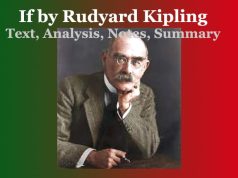What is Mood in Literature
What is Mood in Literature
What is Mood in Literature
Introduction:
In literature, mood refers to the emotional atmosphere or tone that a literary work conveys to the reader. It is the overall feeling or ambiance evoked by the author through various elements, such as setting, language, tone, and imagery. Mood plays a crucial role in shaping the reader’s emotional response and influencing the overall impact of the narrative.
Definition of Mood:
Mood in literature is the emotional backdrop or atmosphere created by the author, influencing the reader’s subjective experience of the text. It is the literary element that sets the tone for the narrative and establishes the emotional resonance that readers perceive.
Elements Contributing to Mood:
Setting:
The time and place in which a story unfolds contribute significantly to the mood. Different settings can evoke various emotions, such as a dark and mysterious castle generating a sense of suspense.
Tone:
The author’s attitude towards the subject matter or characters influences the mood. A humorous tone may create a light and jovial mood, while a somber tone can elicit a more serious or melancholic atmosphere.
Imagery and Descriptive Language:
Vivid and evocative descriptions contribute to the mood by appealing to the reader’s senses. Descriptive language can create a sense of beauty, tension, or dread.
Character Emotions:
The emotional states of characters impact the overall mood. Their joy, fear, sadness, or excitement can be contagious, shaping the reader’s emotional experience.
Types of Mood:
Joyful or Upbeat:
A mood characterized by happiness, excitement, or celebration. This mood is often associated with positive events and outcomes.
Example: The mood in a children’s story about a birthday party is likely to be joyful and upbeat.
Tense or Suspenseful:
A mood marked by anticipation, uncertainty, or anxiety. Tense moods often accompany plot twists or moments of conflict.
Example: In a mystery novel, the mood may become tense as the protagonist unravels a series of clues leading to a dramatic revelation.
Melancholic or Somber:
A mood characterized by sadness, reflection, or a sense of heaviness. This mood may be present in narratives dealing with loss, tragedy, or introspection.
Example: The mood in a poem mourning lost love might be melancholic, with images of solitude and sorrow.
Impact of Mood on the Reader:
Mood significantly influences the reader’s emotional engagement with the text. A well-crafted mood can enhance the reader’s immersion, evoke empathy, and create a lasting emotional impact. What is Mood in Literature
Example: The eerie and ominous mood in Edgar Allan Poe’s “The Tell-Tale Heart” contributes to the sense of dread and suspense surrounding the narrator’s actions.
Conclusion:
In conclusion, mood in literature is a vital element that shapes the emotional atmosphere of a literary work. Through the manipulation of setting, tone, imagery, and character emotions, authors skillfully craft moods that evoke specific emotional responses, enriching the reader’s experience and deepening their connection to the narrative. 0 0 0. What is Mood in Literature
What is Mood in Literature
You May Like:







